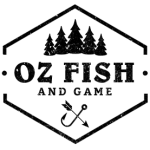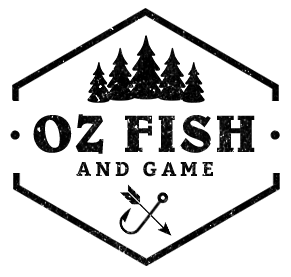Archery Terminology
| Anchor point | The position of your rear hand when the bow is at full draw. For most archers, it will rest at the side of their chin, while the bowstring rests near the corner of their mouth. In some cases, the bowstring may also rest against the edge of the archers nose. Maintaining a consistent anchor point is the key to improving your shot accuracy. |
| Arm-guard | A protective forearm covering for your ‘front’, or bow-holding arm. Arm guards are usually made from plastic, metal or leather. |
| Barebow | A bow with no sight or accessories. |
| Bare shaft | A blank arrow shaft without any additional components. |
| Bow Length | The overall length of a bow. A compound bow’s length is measured from axle to axle, or the point where the bow’s limbs connect to the cams. Recurve bows are measured unstrung between each string groove. |
| Bow-scale | A device used to measure the draw-weight of a bow |
| Bow-square | A device used to measure bracing height and nocking-point position on a bow. |
| Bowstring | The part of the bow that launches the arrow. This string connects the end of one bow limb to the other. Bowstrings must be flexible and capable of holding considerable force and tension. They were traditionally made of animal sinew or natural fibers like hemp or linen. Today, they’re often made from synthetic fibres. |
| Brace Height | Distance between the string and pivot–point of the bow (or pressure button). |
| Broadhead | An arrow point used in hunting. Broadheads are generally V-shaped with two or more cutting edges. A broadhead should always be “shaving sharp”, or capable of removing the hairs on your arm when rubbed carefully along the edge of your skin. A shaving sharp arrow is considered as the minimum standard required to produce an ethical kill shot. |
| Cam | Eccentric pulley found on compound bows. |
| Compound Bow | Bow with eccentric pulleys and cables that allows for high bow weights, but low weight at full-draw. |
| D-Loop | A tied-on loop section of the bowstring which serves two purposes. First, it provides a place for the archer to clip-on their release aid. Secondly, it provide a consistent nocking point for the arrow to attach on the bowstring. |
| Draw | The act of pulling back the bowstring. |
| Draw length | The distance between the string and the pivot point at full draw. |
| Draw-weight | The maximum weight of the bow that is drawn by archer. |
| Dry Fire | The act of drawing and releasing a bowstring without an arrow nocked into position. This can serious damage to both the bow and the archer, as a large amount of stored is transferred into the bow’s limbs (and cams) instead of an arrow. Any bow that has suffered a suspect dry fire should be inspected by a qualified professional before further use. |
| Field Archery | An archery competition that is held in an area that replicates natural hunting conditions. |
| Fishtailing | The movement of an arrow from side to side during flight. |
| “Feeling” of the bow |
How the bow feels in the archers hands. This feeling will usually consist of the following criteria:
|
| Fletching | The flight stabilising devices that are glued on towards the rear end of your arrow. Fletching may also be known as flights, vanes, or feathers (traditional archery). |
| Fletching Jig | The device used to hold an arrow in place as the fletching is added. The use of a fletching jig ensures consistent positioning of the flights while the glue is drying. |
| Flight Shooting | Archery shooting for maximum distance. |
| Flu-flu | Large spiral fletching designed to slow arrow down quickly. This is often used when hunting bird species. |
| F.O.C. | Front of centre, or the balance point of a fully built arrow. This includes all arrow components, such as the; flights, nock, insert, and arrow tip. |
| Full draw | When the bowstring has been fully drawn back and is ready to fire. |
| Kisser Button | Small plastic device attached to the string for alignment with the archer’s mouth at full draw. This ensures a consistent anchor point. |
| Grip | Where hand is placed on riser. Often made of plastic, aluminium, or wood. |
| Let off | The percentage of a compound bow’s overall weight that is held by the archer while at full draw. I.e. a 60lb bow with a let off value of 10% will result in the archer holding 6lbs of draw weight while at full draw. |
| Limb | The energy-storing portion of the bow that is located above and below the riser. |
| Longbow | A single-piece bow. Used in traditional archery. |
| Mechanical broadhead | A broadhead with collapsible cutting arms. During flight, these cutting arms will retract to reduce drag, thereby improving arrow speed. Upon impact, these cutting arms push outwards. This increases the impact surface of the broadhead which results in more damage to internal organs. |
| Nock | The plastic device at the rear the of the arrow. This connects to the string, and if fitted properly – prevents the arrow from falling off the string prior to a shot being taken. |
| Nocking Point | Position on the string where the nock is attached to ensure consistent accuracy. |
| Nock Fit | The fit between your arrow nock and the bowstring. This important, but often overlooked factor can lead to major issues if incorrect. The ideal fit will audibly ‘click’ the nock onto the bowstring, and the arrow will come off the string with a light tap. If the fit is too tight, the arrow will not release from the bowstring cleanly which will reduce accuracy. If nock fit is too loose, the arrow might come off the string while you draw, which may result in a dry fire. See “dry fire” for further info. |
| Paradox (archer’s paradox) | The way the arrow bends around the riser on release. |
| Peak draw-weight | The maximum weight held by an archer whilst drawing the bow. |
| Pivot-point | Position on the grip farthest from the string. |
| Puller | A rubber hand-held gripping device that is used to remove arrows from a target. The use of a puller will prevent damage to the archer’s hand, and will make arrow removal easier. |
| Recurve Bow | A bow with limbs that curve away from the archer. A recurve bow is made of four main components; the riser, the two bow limbs, and the bow string. Additional accessories may also be added to the bow. |
| Quiver | A large pouch, or bow-mounted rack that is used to hold the archers arrows. |
| Release aid | A mechanical device that is clipped onto the bowstring and acts as a trigger to release the arrow smoothly. |
| Rest | A metal or plastic accessory for your bow. The arrow is first placed on top of the rest and nocked into position on the string. The archer then draws the bow, aims, and fires. There are many different type of arrow rests, including; stick-on, glue-on, twin prong, and “Drop-away”. Each have their strengths and weakness, and are suited to a particular type of archery. |
| Riser | The section of the bow that contains the grip, or handle of the bow. In recurve and compound bows, the riser will also include the mounting points for the bow limbs. |
| Shaft | The body of an arrow. |
| Shelf | The flat section of the bow-riser which is located above the grip area. In bare-bow archery, arrows are usually fired from this section of the bow, as opposed to an arrow rest. |
| Spine | The stiffness of the arrow shaft. |
| Stabiliser | Rod and weight combination attached to the bow to eliminate unwanted torque and vibration. |
| String servings | Protective wrapping that surrounds the bow string to prevent wear. |
| Stringer | A device used to bend the limbs of a bow in a way that allow the bow-string to be attached to each string groove. |
| Tab | A protective strip of material that prevents the archer’s string-fingers from chafing on the bow string. Usually made from horse hair or plastic. |
| Target Panic | Also known as “Buck Fever”, target panic is a situation where the archer cannot hold the sight in the centre of a target, or on the kill zone of an animal. This usually results from excitement, or the anxiety over the potential to miss the shot. |
| Windage | Horizontal adjustment of the bow sight to compensate for wind-drift. |
| Window | The recessed area of riser above the grip. |






